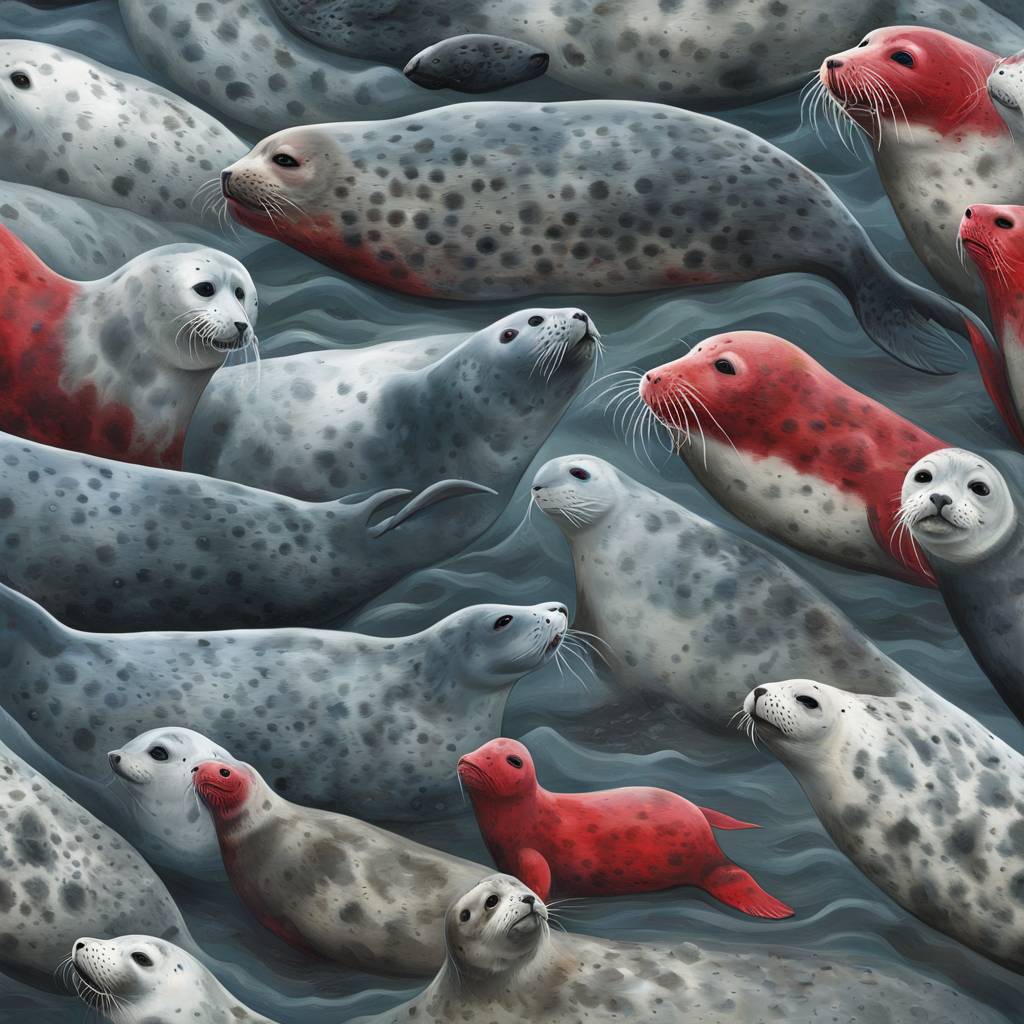Researchers at the University of Gothenburg have conducted a study warning that the current hunting quotas of around 3,000 grey seals per year in the Baltic Sea pose a risk to the long-term survival of the species. The study is based on historical seal hunting statistics from the 20th century and predictions of future climate change. By the 1970s, the population had been decimated to only 5,000 individuals from an initial size of over 90,000 at the beginning of the century, but has since partially recovered to around 55,000 animals.
Baltic grey seals have faced challenges such as hard hunting and environmental contamination by toxins like PCBs, leading to their decline. These seals are genetically isolated from other grey seal populations and have the ability to give birth on both drift ice and land. The population is now facing new challenges in a warming climate with a shortage of prey fish, which could lead to a decline in the population. A mathematical model created by the researchers showed that increased seal hunting could threaten their survival once again.
The researchers concluded that the current hunting quota of 3,000 animals per year is unsustainable, as it consistently leads to a decrease in seal population size. To continue the recovery of the population, the maximum number that can be hunted is estimated to be 1,900 animals. The study examines various scenarios for the future, including different hunting pressures, levels of food availability, and the consequences of less sea ice. If other environmental changes negatively impact the population, the hunting quota may need to be further reduced.
Due to conflict with fisheries in the 20th century, which led to a bounty on seals, detailed statistics on seal hunting were kept, aiding researchers in their study. The grey seal population around the Baltic Sea was close to extinction at one point but has since been allowed to recover. Through collaboration with the Swedish Museum of Natural History, researchers were able to gather data on the development of the grey seal population in modern times. Seals are now used as an environmental indicator for the Baltic Sea, providing data on their numbers, fertility, and health.
Seal pups in the Baltic have a greater survival rate when they are born on sea ice rather than on land. Breeding on ice floes allows mothers and pups to spread out over a larger area, reducing the threat of predators, humans, or infections that can spread easily in dense seal colonies on land. As the seal population has grown, conflicts with the fishing industry have also increased. In response, a licensed hunt was introduced in Finland and Sweden in 2020, potentially allowing for more than 3,000 seals to be killed.
Both individual seals that pose a threat to fishing gear and seal populations as a whole are affected by hunting. Culling individual seals that interfere with fishing gear has historically been allowed without significantly impacting the survival of the population. However, the new licensed hunting represents a different scenario that could have a severe impact on the survival of the grey seal population in the Baltic Sea. Researchers emphasize the need to reconsider and reduce current hunting quotas to ensure the long-term survival of the species.













